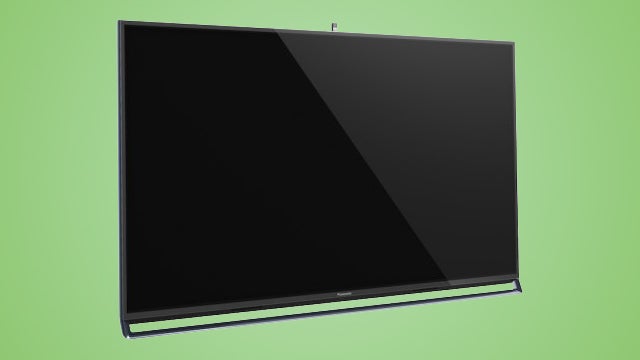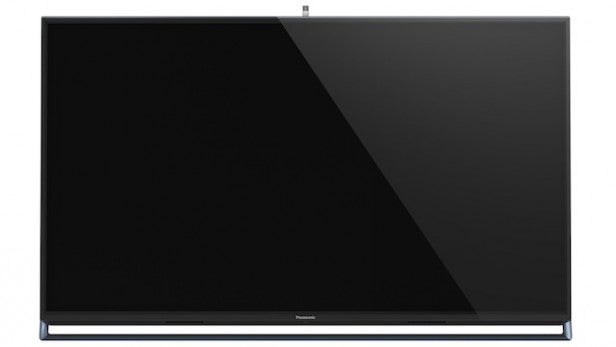Panasonic TX-50AX802 Review - Picture Quality Review
Picture Quality
A stunning 4K TV that gives Panasonic a seat at the top 4K table alongside Samsung and Sony

Sections
- Page 1 Panasonic TX-50AX802 Review
- Page 2 Picture Quality Review
- Page 3 3D, Sound and Conclusions Review
Panasonic TX-50AX802: Picture Quality
The Panasonic TX-50AX802 does its level best to blow our collective socks off with its picture quality.
Kicking off with 4K content – from our tried and trusted 4K demo server and some startlingly gorgeous 30fps footage shot on a DMC-GH4H camera Panasonic thoughtfully provided alongside its TV – the results are just beautiful. 
Detailing and texture reproduction is exquisite, as the set renders every incy-wincy pixel of our test footage perfectly, with no softness, no sense of artificial enhancement, and no noise. That 4K feeling of looking through a window rather than watching a TV is present and correct. Even though, let’s not forget, we’re talking about a ‘mere’ 50-inch TV here, rather than the sort of improbably massive TV behemoth some corners of the AV press still maintain you need in order to appreciate 4K.
Further to this point, while we argue that 4K’s extra resolution and pixel density is still readily apparent at 50 inches, there are a couple of other points about the effect 4K has on pictures that the Panasonic TX-50AX802 also potently reminds us of. First, 4K resolution can boost the sense of depth in images, as the finer pixellation enables the horizon to be resolved further into the distance before a lack of resolution causes the image to flatten out.
Second, having so many extra pixels to work with can have a profound effect on colour reproduction when done right, enabling subtler blends that contribute immensely to that extra sense of watching reality rather than a TV picture.
This latter 4K trait is especially effective on the 50AX802 since it’s accompanied by the extra colour resolution of Panasonic’s Studio Master Colour panel technology. This delivers levels of both colour vibrancy and colour finesse that are at least the equal of Sony’s X9005B range and Samsung’s HU8500 models, and help the panel feel truly next generation in a way that just having 4k’s-worth of pixels alone could not achieve.
What’s more, the 50AX802’s stellar colour performance is not restricted to bright, colourful content. As promised it also holds good during dark scenes, enabling deep, low-lit colours to look just as intense, vivid, but above all natural as bright ones.
This achievement isn’t solely down to the panel’s extra colour range, of course. It also owes a major debt of gratitude to the Panasonic TX-50AX802’s hugely impressive contrast performance, which combines – within the same frame – rich, deep black levels and really punchy whites and bright colours.
That it’s able to achieve such an excellent contrast performance without (if you’ve got the screen set up right – see the set up section) suffering with the sort of unstable brightness levels, backlight clouding and light ‘haloing’ often associated with contrast-rich LCD pictures is a truly outstanding achievement and leaves you with startlingly cinematic pictures which look, dare we say it, strikingly similar to those of Panasonic’s plasma TVs… except with more resolution.
The increased processing power available to the 50AX802 versus Panasonic’s 2013 65WT600 4K debutante helps the new set deliver an enhanced motion performance too. This makes it easier for the screen to retain 4K’s clarity when showing motion without leaving the image looking glitchy or overly processed.
With 4K sources still so painfully thin on the ground – especially in the 50X802’s case – the quality of a 4K TV’s upscaling of HD material remains extremely important. And here again, we’re pleased to say, Panasonic has nailed it.
Even when fed really difficult-to-handle material like the gritty realism of Captain Phillips or the darkness and high levels of grain and noise in the Blu-ray of the final Harry Potter film, Panasonic’s processing clearly and accurately adds to the sense of resolution of the HD source images while simultaneously recognising and suppressing source noise.
Panasonic’s exceptional upscaling accomplishment should be considered a great comfort to anyone doubting the wisdom of buying a 4K TV now, before more sources roll up.
The 50AX802’s images aren’t completely perfect. Viewing angles are fairly limited before contrast and colour take a dive (though not as much so as with some rival non-IPS panels out there). Every now and then a particularly difficult dark sequence can reveal some slight clumsiness in some aspects of the TV’s backlight controls. And while you don’t have to sit impractically close to the 50AX802 to appreciate its 4K charms, you do have to sit closer than you would with an HD TV if you want to get the maximum impact from its Ultra HD pixel count.
You also have to be pretty careful about how you set the 50AX802’s images up if you want them to look as good as they should, as noted earlier. But the main thing is that the rewards for your set up efforts are truly substantial.
How we test televisions
We test every TV we review thoroughly over an extended period of time. We use industry standard tests to compare features properly. We’ll always tell you what we find. We never, ever, accept money to review a product.

